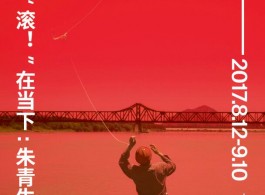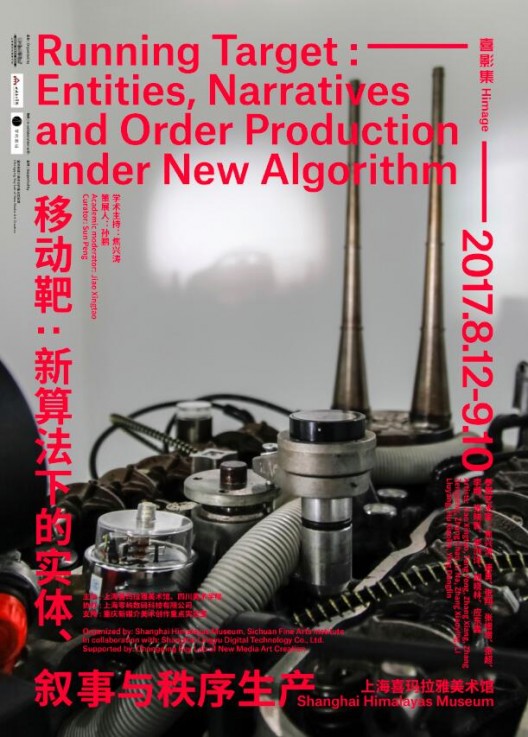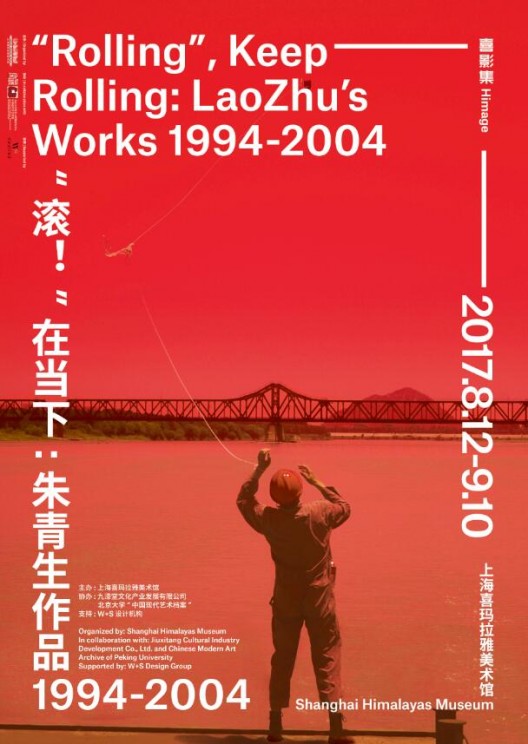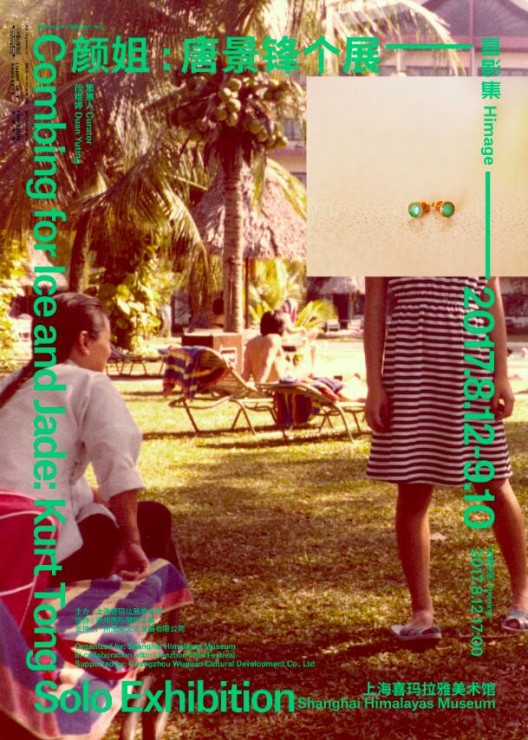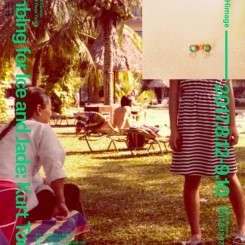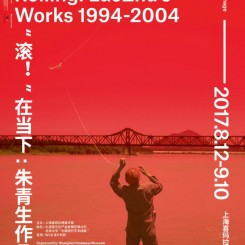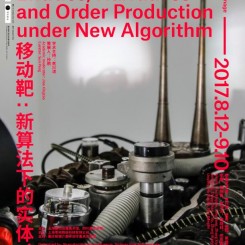The Shanghai Himalayas Museum is pleased to present “Himage”, a new annual platform for photography, moving images, interactive new media and virtual reality technologies. The first season of “Himage” will be open to public on August 12, 2017. In addition to the highlight exhibition Neutral Viewing – Walter Bosshard’s Visual Archive presented in the atrium of the museum, the first season will feature four other exhibitions: “Rolling”, Keep Rolling: LaoZhu’s Works 1994-2004, Combing for Ice and Jade: Kurt Tong Solo Exhibition, Country of Ambition: Yan Ming Solo Exhibition and Running Target: Entities, Narratives and Order Production under New Algorithm.
LaoZhu (Zhu Qingsheng’s nickname) is very much known for his identity as the professor at Peking University and the president of International Society for the History of Art. The exhibition “Rolling”, Keep Rolling: LaoZhu’s Works 1994-2004, however, endeavors to cast more light on the less-well-known identity of him: LaoZhu as an artist. Located in the west wing of the gallery on the first floor, the exhibition displays 11 pieces from his “Rolling!” series. The series, shot between 1994 and 2004, showcases his reflection upon various problems in the form of performance, video art and conceptual art.
Featuring images captured by a camera that was detached from human hand and rolling randomly, “Rolling!” demonstrates the artist’s critical introspection upon media. In other words, the series advocates an “anti-media” stance. Zhu’s criticism not only draws attention towards the power of capital and authority lying behind the media, but also highlights the alienation of human beings and the hegemony thus induced. The concept of “anti-media” is directed against such a cycle of capital chains, dominating power and sense of detachment.
As the Chinese title of the series can mean both “rolling” and “getting out”, it demonstrates LaoZhu’s rebellious spirit. In his opinion, the human world is “created” by the mighty forces of various media, yet people have no full control over any single medium. In the face of such a dilemma, human beings have to seize the initiative and make the hegemony of media to “get out”.
The east wing of the gallery on the first floor will feature two photography exhibitions: Combing for Ice and Jade – Kurt Tong Solo Exhibition and Country of Ambition – Yan Ming Solo Exhibition. The two exhibitions, together with Neutral Viewing – Walter Bosshard’s Visual Archive are presented in collaboration with Lianzhou Foto Festival and curated by Duan Yuting, director of Lianzhou Foto Festival.
Born in Hong Kong in 1977, Kurt Tong was originally trained as a health visitor at the University of Liverpool. He has worked and traveled extensively across Europe, Americas and Asia. Kurt became a full-time photographer in 2003. He was the winner of the Luis Valtuena International Humanitarian Photography Award with his first picture story documenting the treatment of disabled children in India. He gained his Masters in documentary photography at the London College of Communications in 2006 and began working on much more personal projects.
Comprised of 6 sections, Combing for Ice and Jade: Kurt Tong Solo Exhibition showcases 46 photography works and 1 installation work. Nanny Yan, the protagonist of the Combing for Ice and Jade series, is the maidservant of Tong’s family. She chose to became a “self-combing woman” at the age of twenty. At a time when feudal traditions strictly governed women’s behaviour and position in society, becoming a self-combing woman was a socially sanctioned way to avoid marriage and be independent. As a typical representative of the last generation of “self-combing woman,” Nanny Yan embodies some of the most prominent characters of these women – diligence, selflessness and independence. Centering upon the life trajectory of Nanny Yan, the artist intends to investigate the origin of the “self-combing women” and speak for the heroines that have long been ignored.
Born in the 1970s, Yan Ming majored in Chinese Language and Literature in college. After graduation, he had spent ten years pursuing a career as a rock singer and another ten years as a journalist. In 2010, Yan decided to give up his full-time job and became a freelance photographer. In 2014 he published his first photographic essay collection A Once in a Lifetime Moment, revisiting and sharing with readers the beginning of his career as an artist, the development of his personal style, as well as his insights into photography as an art genre.
Country of Ambition, one of his most known photographic series, focuses upon the history and the living conditions we are now faced with. Lying behind the economic boom, the traditional humanistic environment seems to have fallen into a state of emptiness and desolation, to which, unfortunately, most people turn a blind eye. The remains of the so-called “Chinese-style” scenes reveal the loss of our cultural genes and have become an elegy in this regard. Confronted with the economic shocks and the general ignorance of the mass, the relics of humanistic traditions will be further marginalized in the modern society.
Group exhibition Running Target: Entities, Narratives and Order Production under New Algorithm is on view at the galleries on the second floor. With Jiao Xingtao, vice president and professor of sculpture at the Sichuan Fine Arts Institute and Sun Peng take the role as academic moderator and curator respectively and under the support of the “Chongqing Key Laboratory of New Media Art”, the exhibition features 12 artworks created by 10 artists from the Sculpture Department and the New Media Department at the Sichuan Fine Arts Institute.
The three key words of the exhibition – “entities,” “narratives” and “order production” – serve as a point of departure, as well as the final target, of the artists’ practice. A reoccurring clue of the exhibition, “new algorithm” refers to various modern creative methods including biotechnology, the computer model of internal data circulation and control and interactive control technology.
Each work represents an entity that occupies a certain amount of space, and in this sense, sculpture functions as a starting point. The twin towers and giant chimneys built with wasted industrial materials, the three-meter high sculpture constructed according to the brainwave model of the audience, along with the metal plate that looks like to have been extracted from a sculpture of Richard Serra, all stand as typical examples. While the presence of entities has enriched the meaning of neo-technologies, these modern techniques have extended the effective space of the physical objects in return. Some of the participating artists have also explored the narrative potential of new media and neo-technologies. By juxtaposing events from different time and space in one single room, the artists intend to reiterate the emotional connections developed against a background where regional alienation occurs. The artists believe that the ever-changing emotional experience per se is able to create a sense of mystery within the works of art, which forms a resistance towards the indifference and emptiness induced by other art pieces relying upon the so-called international experiences.
Order production is a macro concept, and it serves merely to initiate topics rather than to provide solutions. With the new algorithm – a “weapon” in the modern era of artificial intelligence and visual revolutions, certain relationships are constantly discussed as a way of keeping up with the changing pace generated by the new order between artists, technologies, artworks, audiences and human bodies.
Photography, video, new media and virtual reality have already become indispensable means of expressions that have closely linked their own pioneering characteristics to the current cultural value system in the field of contemporary art nowadays. Ever since its establishment in 2005, Shanghai Himalayas Museum has dedicated itself to exploring the immense possibilities of artistic development. In 2017, Shanghai Himalayas Museum launches “Himage,” an annual platform featuring a cluster of exhibitions centering on the concepts of photography, moving images, interactive new media and virtual reality technologies. In the course of “Himage”, the museum will organize a series of public education activities, including lectures, seminars and workshops to further the discussions on these topics.
About Shanghai Himalayas Museum
Established in 2005, the Shanghai Himalayas Museum (formerly known as Shanghai Zendai MoMA) was founded by Dai Zhikang, chairman of Zendai Group. The building of the museum is designed by renowned Japanese architect Arata Isozaki. With vision and an open mind, the museum has, since its establishment, played an active role in exploring new patterns in the context of the contemporary society, furthering the study of art in terms of both breadth and depth, breaking down barriers among different disciplines with a contemporary touch, integrating the contemporary with the traditional and promoting communication and collaboration between China and abroad in the realm of culture and arts to showcase and interpret the notion of a public-oriented museum.

